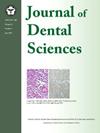Corylin attenuates oral squamous cell carcinoma progression through c-Myc inhibition
IF 3.1
3区 医学
Q1 DENTISTRY, ORAL SURGERY & MEDICINE
引用次数: 0
Abstract
Background
/purpose: Oral squamous cell carcinoma (OSCC) is the most prevalent malignancy of the head and neck, with current treatment options often limited by low efficacy and drug resistance. In this study, we investigated the anticancer activity and underlying mechanisms of corylin, a flavonoid extracted from Psoralea corylifolia, in OSCC.
Materials and methods
OSCC cell lines (SAS and OECM1) were treated with corylin, and its effects on cell proliferation, migration, and invasion were assessed using cell function assays. Flow cytometry and DiOC6/PI staining were performed to analyze cell cycle progression and apoptosis, while Western blotting was used to elucidate the molecular mechanisms of corylin's action.
Results
Corylin selectively inhibited OSCC cell growth, migration, and invasion while exhibiting minimal toxicity toward normal human cells. Mechanistic investigations revealed that corylin downregulated c-Myc expression, which subsequently modulated the expression of cell cycle checkpoint regulators, apoptosis-related proteins, and epithelial–mesenchymal transition (EMT)-associated markers. This led to G1 phase cell cycle arrest and enhanced apoptosis induction. Additionally, corylin significantly enhanced the anticancer efficacy of cisplatin and 5-FU in OSCC cells.
Conclusion
Corylin exhibits potent anticancer activity against OSCC by targeting c-Myc-mediated oncogenic pathways and may serve as a promising therapeutic candidate. Furthermore, its ability to synergize with cisplatin and 5-FU suggests its potential role in combination therapy to improve treatment efficacy.
Corylin通过抑制c-Myc减缓口腔鳞状细胞癌的进展
背景/目的:口腔鳞状细胞癌(Oral squamous cell carcinoma, OSCC)是头颈部最常见的恶性肿瘤,目前的治疗方案往往受到低疗效和耐药的限制。在本研究中,我们研究了从补骨脂中提取的一种类黄酮——茯苓素在OSCC中的抗癌活性及其机制。材料和方法用科里林处理soscc细胞系(SAS和OECM1),通过细胞功能测定评估其对细胞增殖、迁移和侵袭的影响。采用流式细胞术和DiOC6/PI染色分析细胞周期进程和凋亡情况,Western blotting分析corylin作用的分子机制。结果scorylin选择性地抑制OSCC细胞的生长、迁移和侵袭,同时对正常人细胞的毒性很小。机制研究显示,coylin下调c-Myc表达,随后调节细胞周期检查点调节剂、凋亡相关蛋白和上皮-间充质转化(EMT)相关标记物的表达。这导致G1期细胞周期阻滞和细胞凋亡诱导增强。此外,corylin显著增强了顺铂和5-FU在OSCC细胞中的抗癌作用。结论corylin通过靶向c- myc介导的致癌途径,对OSCC具有较强的抗肿瘤活性,可能是一种有前景的治疗候选药物。此外,其与顺铂和5-FU的协同作用表明其在联合治疗中具有提高疗效的潜在作用。
本文章由计算机程序翻译,如有差异,请以英文原文为准。
求助全文
约1分钟内获得全文
求助全文
来源期刊

Journal of Dental Sciences
医学-牙科与口腔外科
CiteScore
5.10
自引率
14.30%
发文量
348
审稿时长
6 days
期刊介绍:
he Journal of Dental Sciences (JDS), published quarterly, is the official and open access publication of the Association for Dental Sciences of the Republic of China (ADS-ROC). The precedent journal of the JDS is the Chinese Dental Journal (CDJ) which had already been covered by MEDLINE in 1988. As the CDJ continued to prove its importance in the region, the ADS-ROC decided to move to the international community by publishing an English journal. Hence, the birth of the JDS in 2006. The JDS is indexed in the SCI Expanded since 2008. It is also indexed in Scopus, and EMCare, ScienceDirect, SIIC Data Bases.
The topics covered by the JDS include all fields of basic and clinical dentistry. Some manuscripts focusing on the study of certain endemic diseases such as dental caries and periodontal diseases in particular regions of any country as well as oral pre-cancers, oral cancers, and oral submucous fibrosis related to betel nut chewing habit are also considered for publication. Besides, the JDS also publishes articles about the efficacy of a new treatment modality on oral verrucous hyperplasia or early oral squamous cell carcinoma.
 求助内容:
求助内容: 应助结果提醒方式:
应助结果提醒方式:


